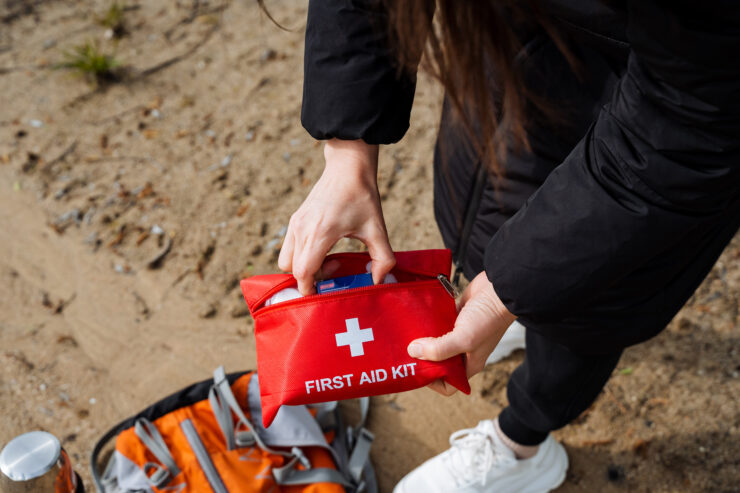Every family needs a just-in-case kit.
From a power outage to maybe a bigger life crisis, when life throws the unexpected your way, being prepared can make all the difference. It’s a good idea to keep a just-in-case kit ready for whatever happens.
Jessica Cardwell shared smart ideas to keep you and your loved ones ready for whatever comes your way.
Everyday Bag
Jessica suggested starting with two foundational items: an everyday bag and a car kit. “I have young toddlers and so my everyday bag is my diaper bag.” This bag includes essentials like diapers and wipes, along with a first aid kit and daily medicines. Customize the first aid kit to include items specific to your needs. For example, Jessica added tick removers and cohesive bandage rolls to her kit, tailoring it to her family’s specific needs. Here are some other items Jessica recommended including:
- Small first aid kit
- OTC medicines/health solutions
- Nausea bags
- Snacks
- Pepper gel
- Sunscreen
- Water
- Electrolytes
Jessica emphasized the importance of rotating food that you’re storing. “In general… with any food that you’re storing, whether that’s in your everyday bag, your car kit, or just your home food storage, you want to try to check and rotate those about every six months,” she suggested. Regularly replenishing snacks and rotating stored food helps you stay always ready.
Car Kit
The car kit is equally important, containing items that can be lifesavers in emergencies. “One thing that really saved my family last fall was a car battery jumpstarter.” This tool helps you handle a dead battery without needing another vehicle. Other items Jessica recommended include:
- Car Battery Jumpstarter: Start your car even if the battery dies without relying on another vehicle.
- Emergency Hand Crank Weather Radio: Receive weather updates and emergency broadcasts without needing batteries.
- Car Escape Tools
- Safety Kit With Jumper Cables, Small Tool Kit, Flares
- First Aid Kit: Should include bandages, gauze, antiseptic wipes, and any personalized items like tick removers. Jessica advises customizing your kit to suit your specific needs.
- Extra Change of Clothes for Everyone
- Mylar Blankets
- Portable Potty
- Umbrella/Ponchos
- Instant Ice Packs
- Snacks: Non-perishable items like granola bars, dried fruit, and nuts to keep you nourished during an emergency.
- Water: Bottled water or portable water filters to ensure safe drinking water.
Jessica’s last piece of advice was to keep an eye on your gas tank. Keeping it half full is a simple way to avoid panic in emergencies. “If you are nearing half, then think of that as empty. That way you’re always good and you don’t have to worry about running on fumes anywhere and running out.”
Find more advice from Jessica at afamilyprepared.com, where she offers a free guide to building an emergency car kit. You can also follow her on Instagram @afamilyprepared.














Add comment